Selected References:
- Afrman, JJ, et al. 2020. Therapeutic Drug Monitoring of Antiepileptic Drugs in Women with Epilepsy Before, During, and After Pregnancy. Clin Pharmacokinet. 59(4):427-45
- Alsaad AMS, et al. 2015. First trimester exposure to topiramate and the risk of oral clefts in the offspring: A systematic review and meta-analysis. Reprod Toxicol 53: 45-50.
- Blotière PO, et al. 2020. Risk of early neurodevelopmental outcomes associated with prenatal exposure to the antiepileptic drugs most commonly used during pregnancy: a French nationwide population-based cohort study. BMJ open. 10(6):e034829
- Blotière PO, et al. 2019. Risks of 23 specific malformations associated with prenatal exposure to 10 antiepileptic drugs. Neurology 93(2):e167-80.
- Bjork MH, et al. 2022. Association of prenatal exposure to antiseizure medication with risk of autism and intellectual disability. JAMA Neurol 79(7):672.
- Bromley RL, et al. 2016. Cognition in school-age children exposed to levetiracetam, topiramate, or sodium valproate. Neurology. 87(18):1943-53.
- Committee on Drugs. 2001. The transfer of drugs and other chemicals into human milk. Pediatrics, 108(3), 776-789.
- Heinonen OP, Slone D, Shapiro S. Birth defects and drugs in pregnancy. Littleton, MA: John Wright-PSG, 1977a, pp 389, 391-392, 394, 443, 478, 497.
- Hernandez-Diaz S, et al, for the North American AED Pregnancy Registry. 2012. Comparative safety of antiepileptic drugs during pregnancy. Neurology; 78:1692-1699.
- Hernandez-Diaz S, et al. 2014. Association between topiramate and zonisamide use during pregnancy and low birth weight. Ob Gyn. 123(1): 21-28.
- Hernandez-Diaz S, et al. 2017. Fetal growth and premature delivery in pregnant women on antiepileptic drugs. Ann Neurol. 82(3):457-65.
- Hernandez-Diaz S, et al. 2018. Topiramate use early in pregnancy and the risk of oral clefts: a pregnancy cohort study. Neurology; 90(4):e342-51.
- Holtkamp M, et al. 2005. Erectile dysfunction with topiramate. Epilepsia. Jan;46(1):166-167.
- Keni RR, et al. 2018. Teratogenicity of antiepileptic dual therapy: Dose-dependent, drug-specific, or both?. Neurology. 90(9); e790-6.
- Keni RR, et al. 2020. Anti-epileptic drug and folic acid usage during pregnancy, seizure and malformation outcomes: Changes over two decades in the Kerala Registry of Epilepsy and Pregnancy. Epilepsy Research; 159:106250.
- Ornoy A, et al. 2017. Antidepressants, antipsychotics, and mood stabilizers in pregnancy: what do we know and how should we treat pregnant women with depression. Birth defects research;109(12):933-56.
- Tomson T, et al. 2018. Comparative risk of major congenital malformations with eight different antiepileptic drugs: a prospective cohort study of the EURAP registry. The Lancet Neurology;17(6):530-8.
- Vajda FJ, et al. 2016. Antiepileptic drug combinations not involving valproate and the risk of fetal malformations. Epilepsia. 57(7):1048-52.
- Veroniki AA, et al. 2017. Comparative safety of anti-epileptic drugs during pregnancy: a systematic review and network meta-analysis of congenital malformations and prenatal outcomes. BMC medicine. 15(1):95.
- Vajda FJ, et al. 2018. Antiepileptic drug polytherapy in pregnant women with epilepsy. Acta Neurologica Scandinavica; 138(2):115-21.
- Vajda FJ, et al. Antiepileptic drugs and foetal malformation: analysis of 20 years of data in a pregnancy register. Seizure; 65:6-11.
- Vajda FJ, et al. Preexisting illness, fetal malformation, and seizure control rates in pregnant women with epilepsy. Epilepsy & Behavior; 9:106481.
- Weston J, et al. 2016. Monotherapy treatment of epilepsy in pregnancy: congenital malformation outcomes in the child. Cochrane Database Syst Rev. 11:Cd010224.
- Wu M, et al. 2016. Spermatorrhea and loss of libido induced by topiramate: First case report and review of literature. Clin Neuropharm 39:325-326.

